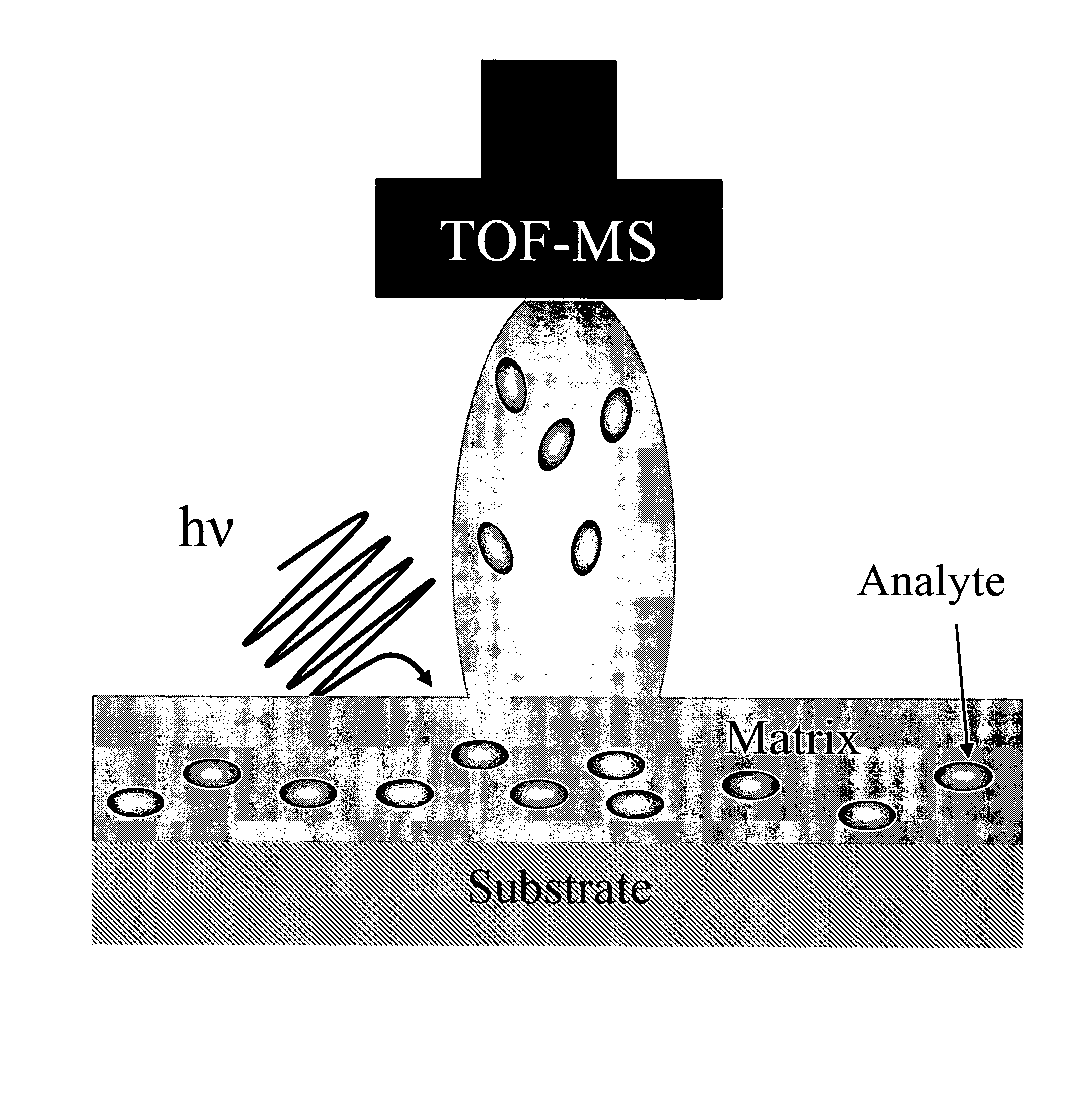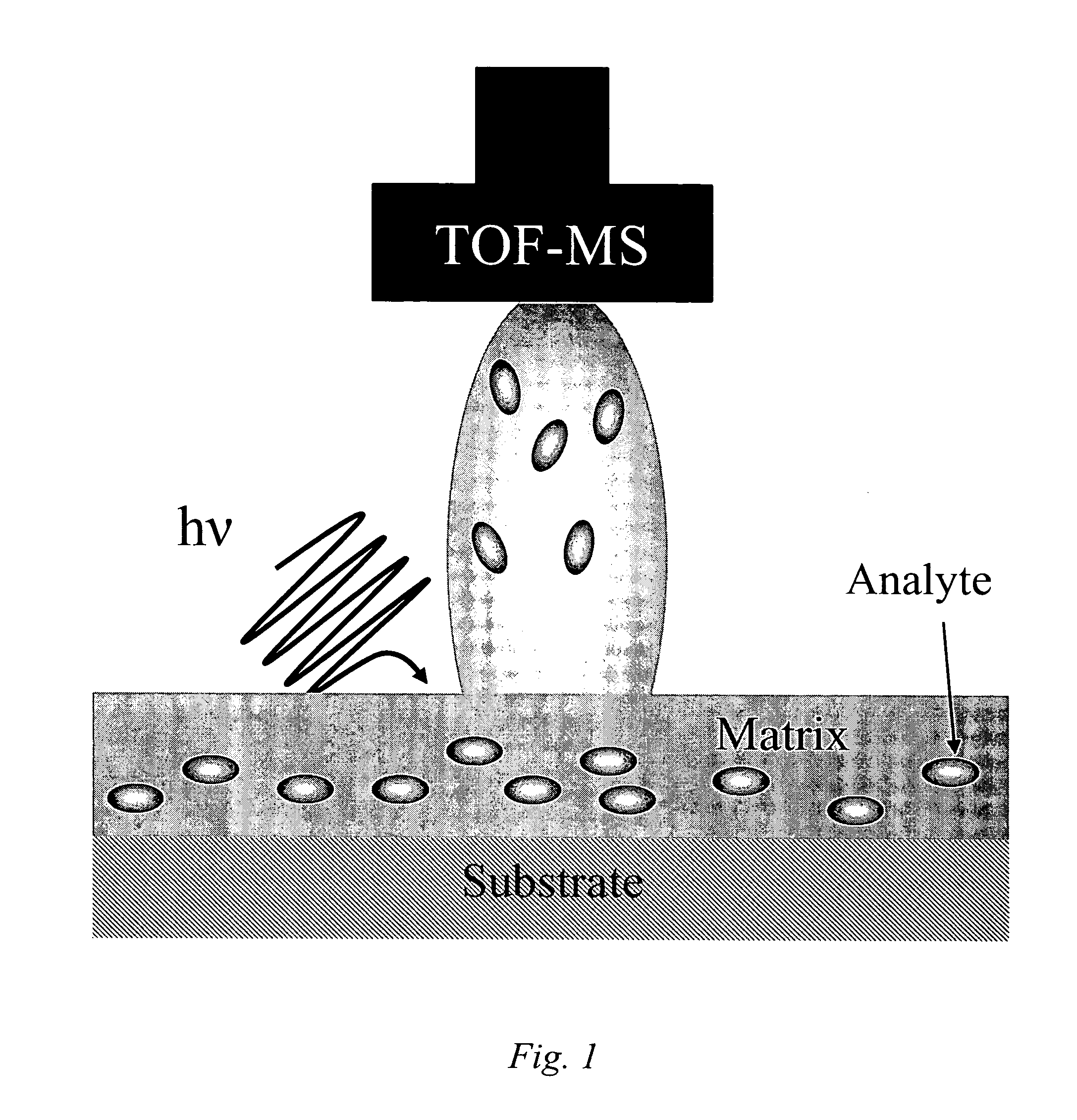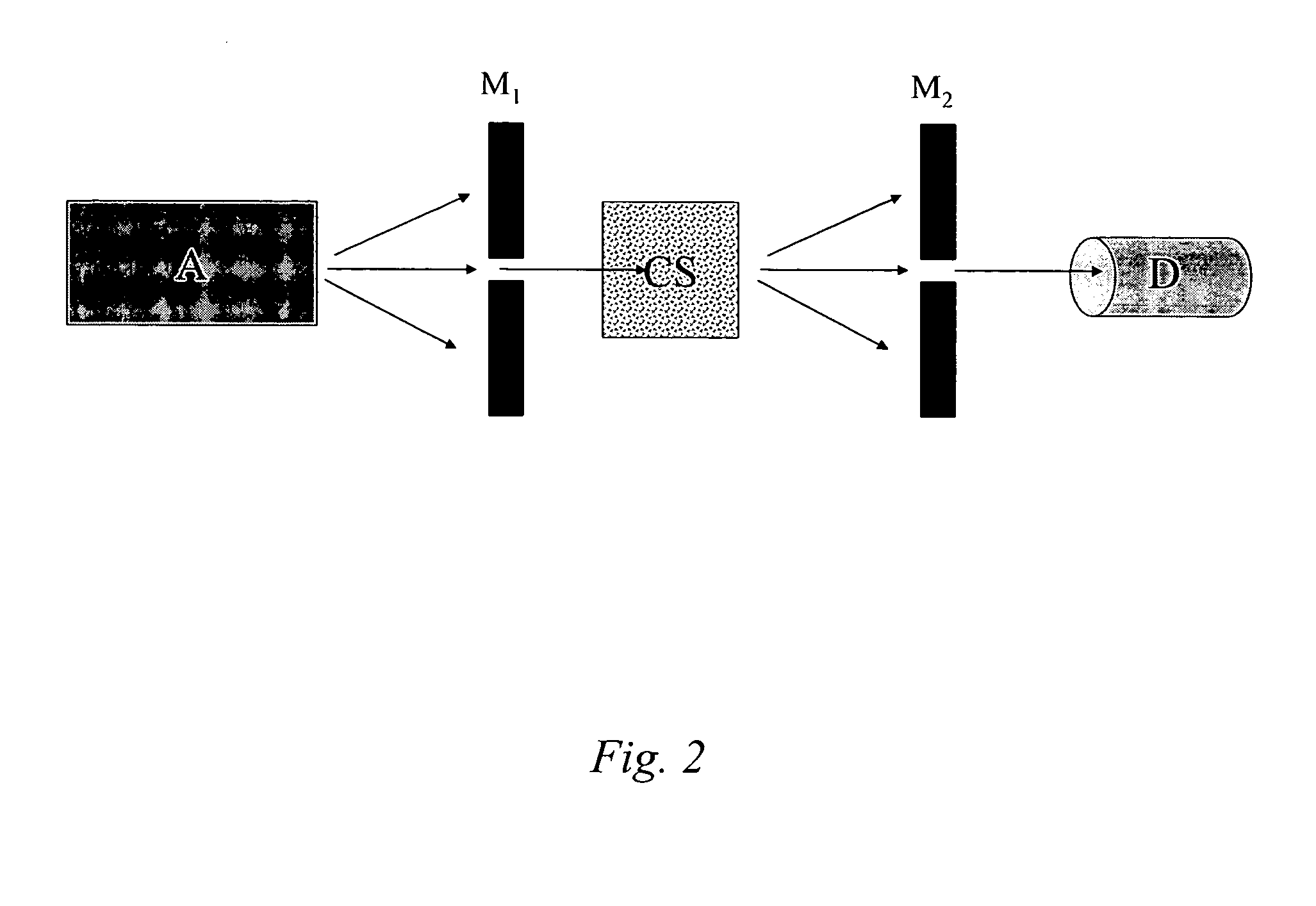Carbon nanotubes and their derivatives as matrix elements for the matrix-assisted laser desorption mass spectrometry of biomolecules and sequencing using associated fragmentation
a technology of matrix-assisted laser desorption and carbon nanotubes, which is applied in the field of mass spectrometry, can solve the problems of selection and availability of the right matrix molecul
- Summary
- Abstract
- Description
- Claims
- Application Information
AI Technical Summary
Problems solved by technology
Method used
Image
Examples
example
[0038] Based on interesting UV absorption characteristics [M. J. O'Connell et al., Science, 297, 593 (2002)] and excellent mechanical properties, [B. I. Yakobson and R. E. Smalley., American Scientist., 85, 324 (1997)]. Applicants demonstrate in this Example the extraordinary potential of single-walled carbon nanotubes (SWNT) as efficient, non-desorbing matrix elements for MALDI-MS. Applicants further highlight the potential of using SWNTs and their derivatives as promising candidates for the fragmentive dissociation of biomolecules, such as peptides and proteins, that would enable their sequencing. Angiotensin II, a polypeptide, has been used as a test case to verify the efficiency of SWNTs as matrices for laser desorption ionization.
[0039] MALDI experiments on the Angiotensin II were carried out under three different conditions. In the first case, tiny drops of the aqueous solution of the peptide were placed directly on stainless steel sample plate and dried. In the second case, ...
PUM
| Property | Measurement | Unit |
|---|---|---|
| diameter | aaaaa | aaaaa |
| organic | aaaaa | aaaaa |
| non-covalent | aaaaa | aaaaa |
Abstract
Description
Claims
Application Information
 Login to View More
Login to View More - R&D
- Intellectual Property
- Life Sciences
- Materials
- Tech Scout
- Unparalleled Data Quality
- Higher Quality Content
- 60% Fewer Hallucinations
Browse by: Latest US Patents, China's latest patents, Technical Efficacy Thesaurus, Application Domain, Technology Topic, Popular Technical Reports.
© 2025 PatSnap. All rights reserved.Legal|Privacy policy|Modern Slavery Act Transparency Statement|Sitemap|About US| Contact US: help@patsnap.com



